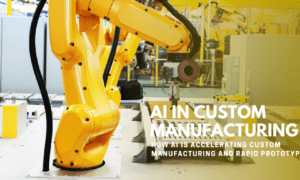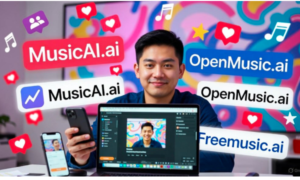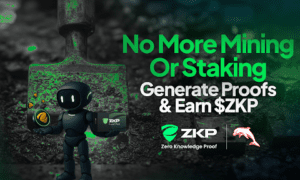Told through a real-world case study from inside the creator space
I live in San Francisco, and AI feels like it’s everywhere right now. Not just on screens, but on street posters, ads, random billboards. The other day I passed three in a row walking to get coffee. And most of the time, it sparks ideas for me and my colleagues – like, here’s another tool we could use to do something faster, more effectively, or with more creativity.
At first we expected robots helping with day-to-day tasks like cleaning. But the shift happened fast – and suddenly, AI isn’t just assisting – it’s doing creative jobs. Writing scripts. Generating images and even videos. Coming up with ideas.
I’ve worked in the creator and influencer space for over a decade now. And I’ve been paying close attention to how AI is being used in the ad field. Honestly, it’s evolving faster than I think most people expected.
I was at Stripe’s 2025 conference in San Francisco when Zuckerberg got up to speak. He called AI “the ultimate business agent,” and shared that Meta’s planning to launch tools that auto-generate ad creatives at scale and identify high-intent audiences. So basically the plan is to use AI not just for targeting, but for pretty much everything: generating the ad, choosing the audience, optimizing the spend.
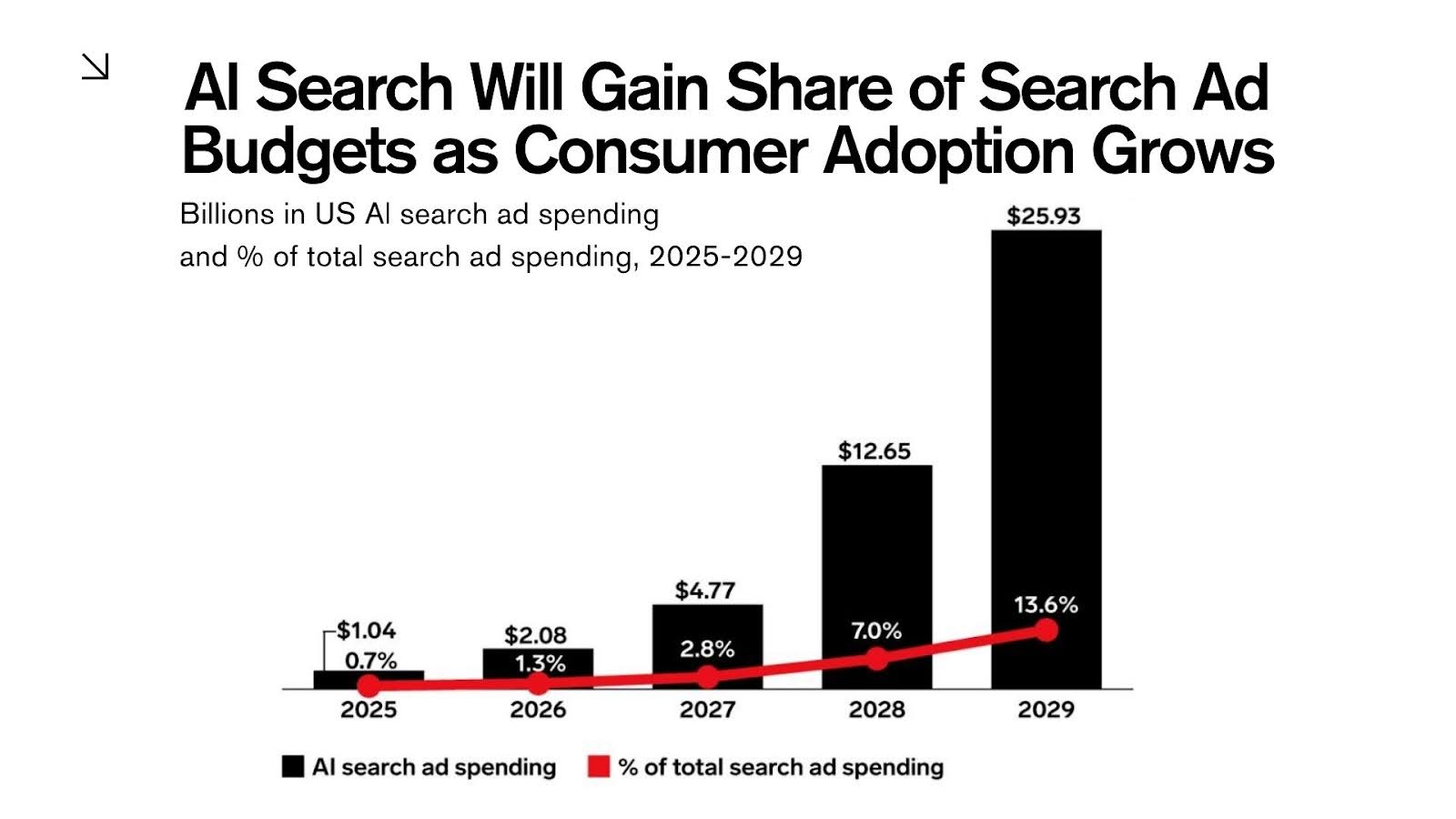
Source: Emarketer report 2025
I spend a lot of time analyzing how AI tools are affecting the brands I work with, and one thing that continues to work – perhaps more than ever – is human connection and authentic storytelling, despite all the innovation.
Global marketing investments in influencers and creators are likely to exceed $30 billion by the end of 2025. But the more budget flows into this economy, the more content gets produced – and the sharper today’s audiences become. We can even notice it in ourselves: within a second of interacting with content, we can tell if something feels off. We don’t need to think about it consciously – we just know whether it’s a paid actor, an AI-generated video, or a real person telling their truth.
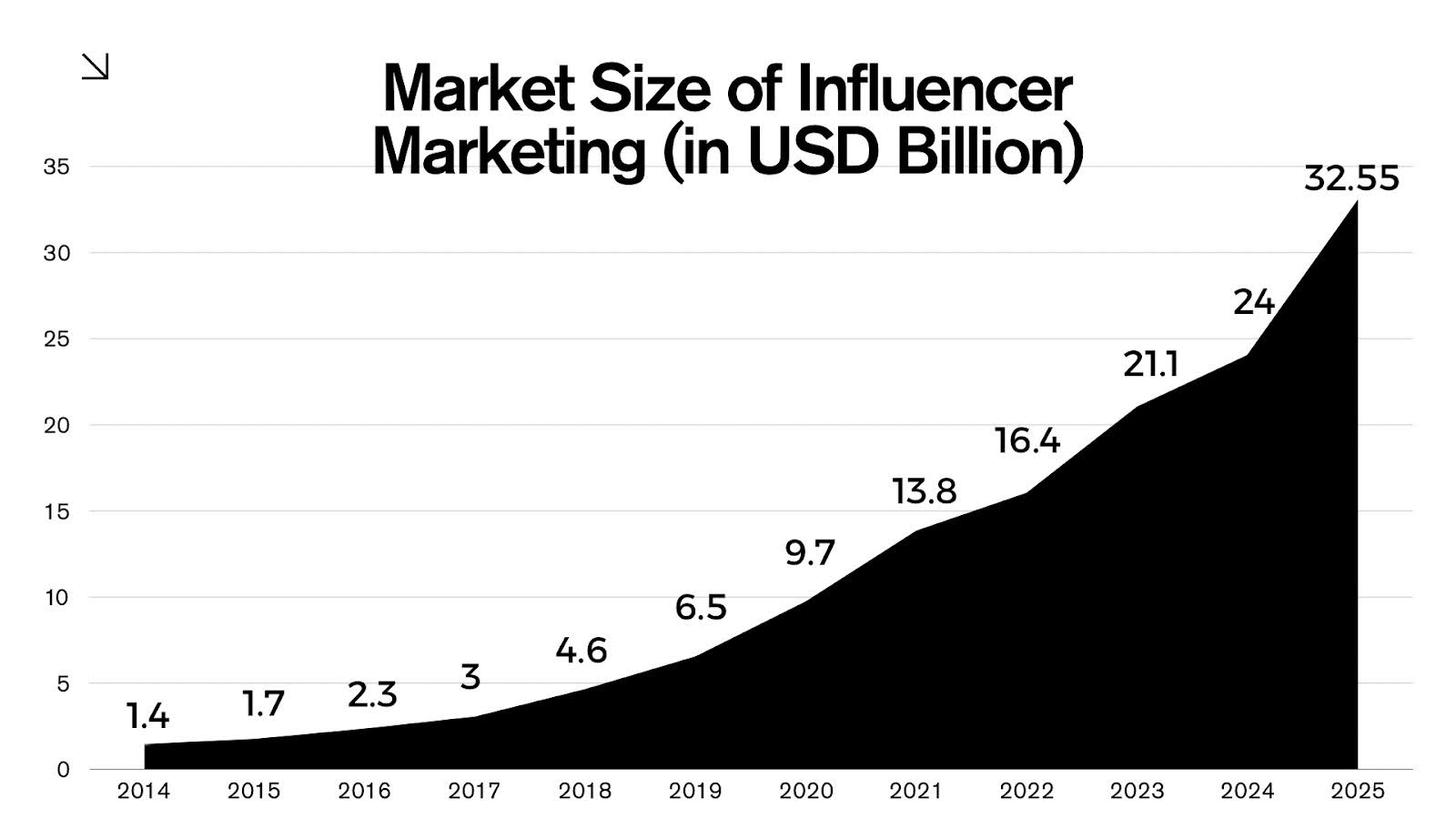
Source: Influencer Marketing Hub Report 2025
So this is the reality: if a company wants to deliver its message in a way that actually reaches the inner circle and affects the audience, authenticity is key. Of course, there are businesses with more straightforward products – marketplaces like Temy or Etsy, or categories like fashion, furniture, and beauty – that can still reach their goals without much real storytelling. But for more serious and complex sectors like healthcare and biotech, it’s much harder. These industries need nuance, trust, and emotional connection. And only real people can give that.
When I began leading creator marketing at Sequencing.com – the largest online platform for DNA-based health insights – I witnessed how important a story-first approach was. I remember how I talked to the founder Dr. Brandon Colby after just joining the team and we agreed on one thing right away: audiences are very skeptical of anything that feels overly scripted or artificial. They want to see real people whose lives have been changed by their genetic test. That’s the only way to build long-term credibility.
Then the strategy started to come together. We decided to focus most of my efforts on identifying people, whose lives were (or could be) impacted by genetic testing, building the relationship with them, and helping them share their story – in an authentic, yet effective way. That included people with unresolved symptoms, complicated family health histories, or parents curious about their children’s well-being. We started talking with more and more individuals who had used Sequencing not because someone told them to, but because they were looking for answers. Some had been to five, six, even more doctors. Nothing made sense. No one could explain what was going on.
One woman told us something I still think about. Her grandfather went into a coma after a routine surgery years ago – no clear reason why. She found out, through testing, that there’s a rare gene that messes with how anesthesia is processed. She had it. So did her kid. Early detection probably changed their life.
There was also someone else. She’d been in pain for years – nothing huge, just constant. Always feeling tired. She used Sequencing to order a test herself and finally got a name for what was going on: Ehlers-Danlos Syndrome. It gave her direction and doctors started to treat her symptoms differently. That alone felt huge.
The stronger the community I built and the more creators I sourced, the clearer the pattern became. Many of them had been ignored and not taken seriously by medical professionals – they kept hearing things like “you’re too young to be in pain,” or that their symptoms were psychosomatic or imaginary. But with genetic results in hand, they were finally taken seriously. When this influencer shared that online—explaining how they took the Sequencing test – many people came forward in the comments with similar experiences.
We also launched giveaways with influencers who reported that their lives had changed because of genetic testing, offering free DNA kits to their followers. This deepened the community connection and became a source of more authentic content. All the creators we brought on were genuine advocates for the brand. They didn’t just post on their socials – they also replied to comments under Sequencing’s ads themselves. We could also use their real names and credentials on our website and social media.This added a real sense of authenticity and trust.
Once we started using those more “raw” videos in paid ads, the difference was clear. They outperformed the polished, scripted content and even the AI-made content. Our Cost Per Click dropped from $2.50 to $0.10. Click-Through Rate went up from 0.5% to 2%. UGC really shifted things. It helped build deeper trust, stronger engagement, and a connection that turned into really good numbers.
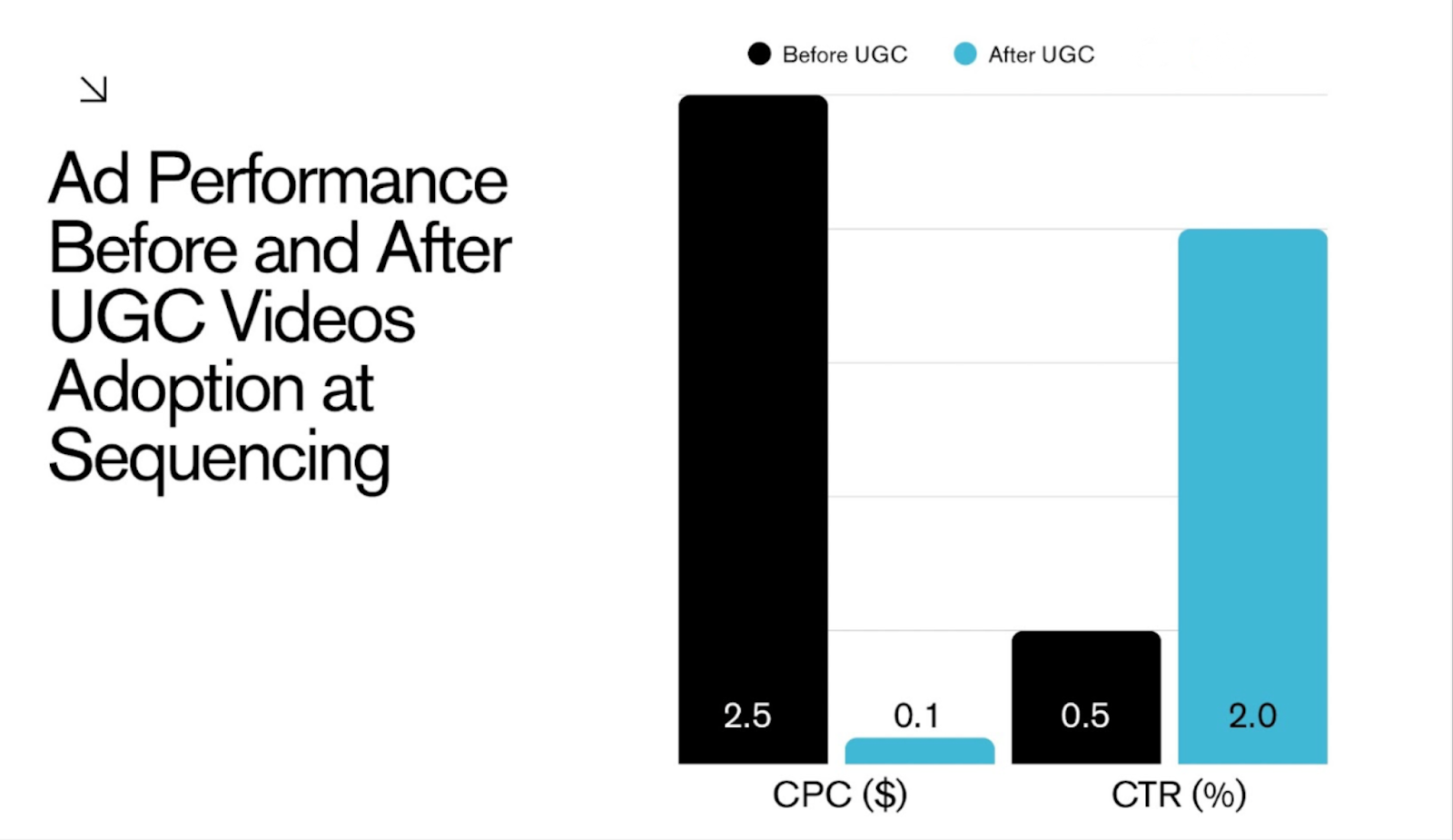
CPC stands for Cost Per Click, which is a common online advertising model where advertisers pay only when their ad is clicked.
Here are the main takeaways that brands and communications professionals can take from all the experience I shared:
- Build community: Partner only with those creators whose experiences reflect your brand values and who are truly appreciative of your product. They’ll become true advocates who build genuine communities around your message. Focus your efforts on identifying, nurturing, and supporting these relationships. And assist them in telling their stories in a better way—with a stronger hook and pacing—but the essence should remain a truthful experience.
- Foster authenticity: In our technologically advanced times, more than ever, people connect most with honest, vulnerable storytelling—not just scripted, polished ideas delivered by a professional actor or a non-existent digital avatar. Find the real pain points your product solves and create stories that reflect that truth. Try to add raw emotional depth into the mix.
- Use AI strategically: Many people make the mistake of either avoiding AI completely or using only basic tools. But you have to stay up to date with evolving technology. AI has proven to be effective in optimizing campaigns, forecasting performance, and streamlining operations—but don’t rely on it to replace the content creation process entirely. When used as a tool that enhances the core foundation, it can truly help you scale.
While AI plays a big role in the future of creator marketing and will increasingly help with delivery, targeting, and data, the most efficient campaigns in health or biotech – truly successful ones – are built on and around real human experiences and trusted relationships. No technology can replace the emotional aspect of credibility that forms between people and brands online.
By Evgeniya Kuzmina- Director of Communications at Splash Agency Inc.





